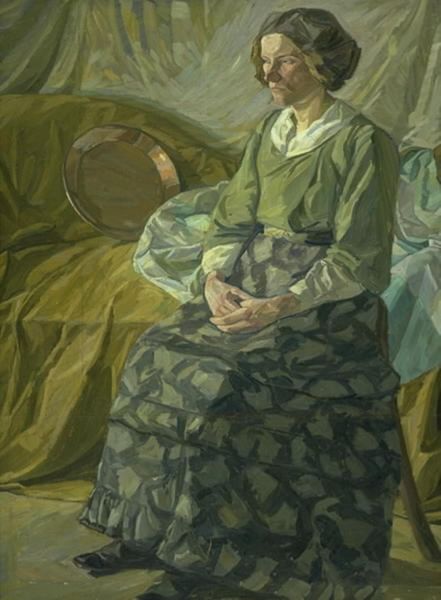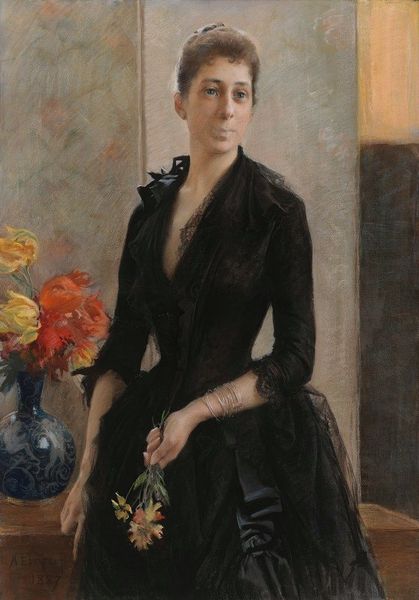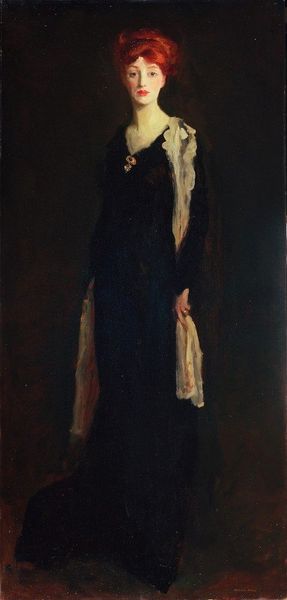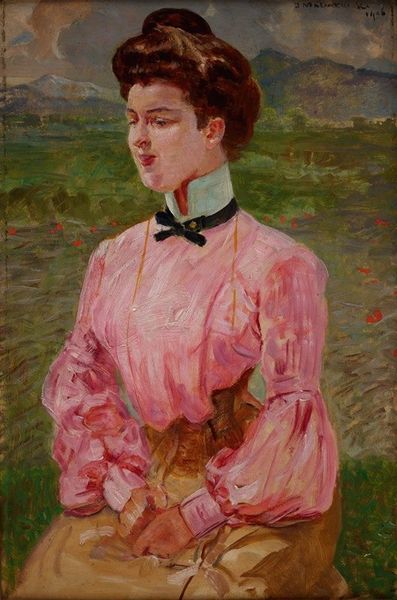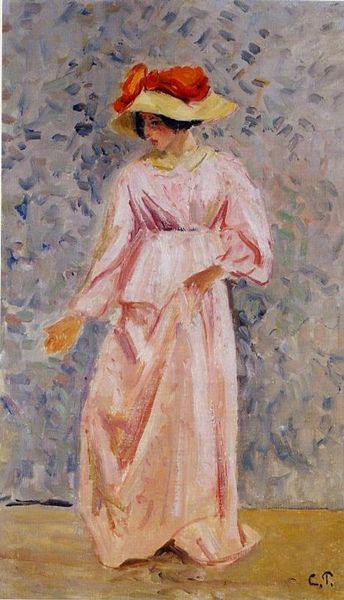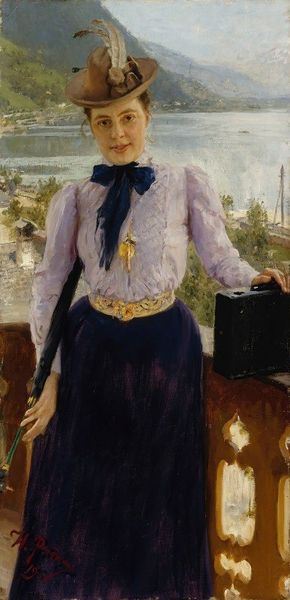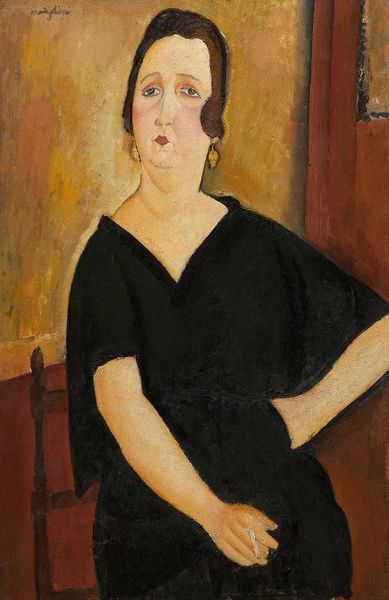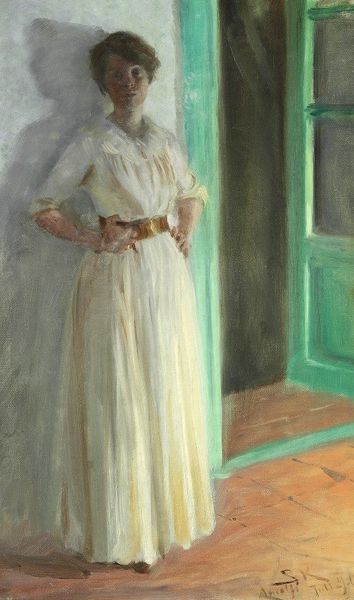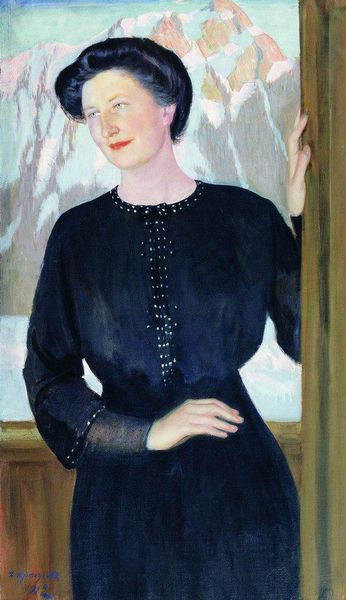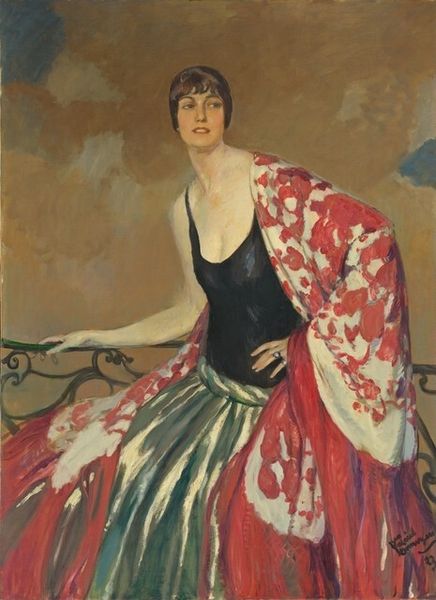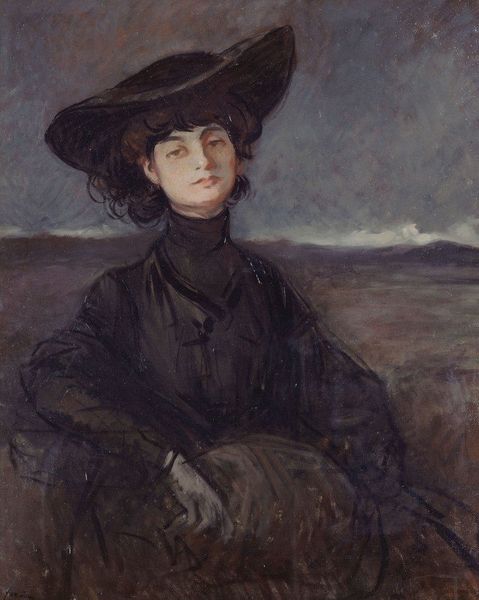
Copyright: Public Domain: Artvee
Curator: Jacek Malczewski's “The Finished Song – Portrait of Róża Aleksandrowicz” from 1919, catches the eye immediately with its intriguing juxtaposition of formal portraiture and pastoral landscape. Editor: Oh, absolutely! I'm struck by her somber expression against this almost whimsical background, like a cloud passing over a sunny field. Curator: Indeed. Notice the tactile quality of the oil paint, particularly in her velvet dress. The visible brushstrokes really bring out the luxuriousness, which of course, speaks to the status of both the sitter and the artist's patron. Editor: It feels like a scene plucked from a half-remembered dream, though. That blurred line of figures in the background—who are they? Is that supposed to be a chorus, or are they just ghosts of the song she’s finished? Curator: Well, Malczewski was deeply invested in Polish symbolism and romanticism. So those figures could be read as representing the Polish people. Her finished song representing a lament perhaps, but also, crucially, a completion of creative labor. This was made just after WWI had ended. Consider too how the painting's materials, readily accessible, oil on canvas, link it to both high art and a form of cultural resilience. Editor: Mmm. I wonder what Róża herself thought about being immortalized like this—part queen, part mournful muse. Her little handbag adds to the mystery, you know, secrets held close. Maybe the song is encoded in it. Curator: Perhaps! And from my point of view, let’s not dismiss the economics here. A portrait of this scale would have signaled serious patronage. The dress would be sourced carefully and intentionally selected. The entire scene speaks volumes about a moment in cultural history and material production. Editor: Alright, point taken. But as much as I love knowing about the economic background, for me this painting will always sing with its bittersweet mood, suspended somewhere between earth and sky. It’s about how melancholy can coexist with great beauty, isn't it? Curator: I can definitely agree with that! And appreciating both these perspectives opens richer views onto understanding this very layered artwork.
Comments
No comments
Be the first to comment and join the conversation on the ultimate creative platform.
